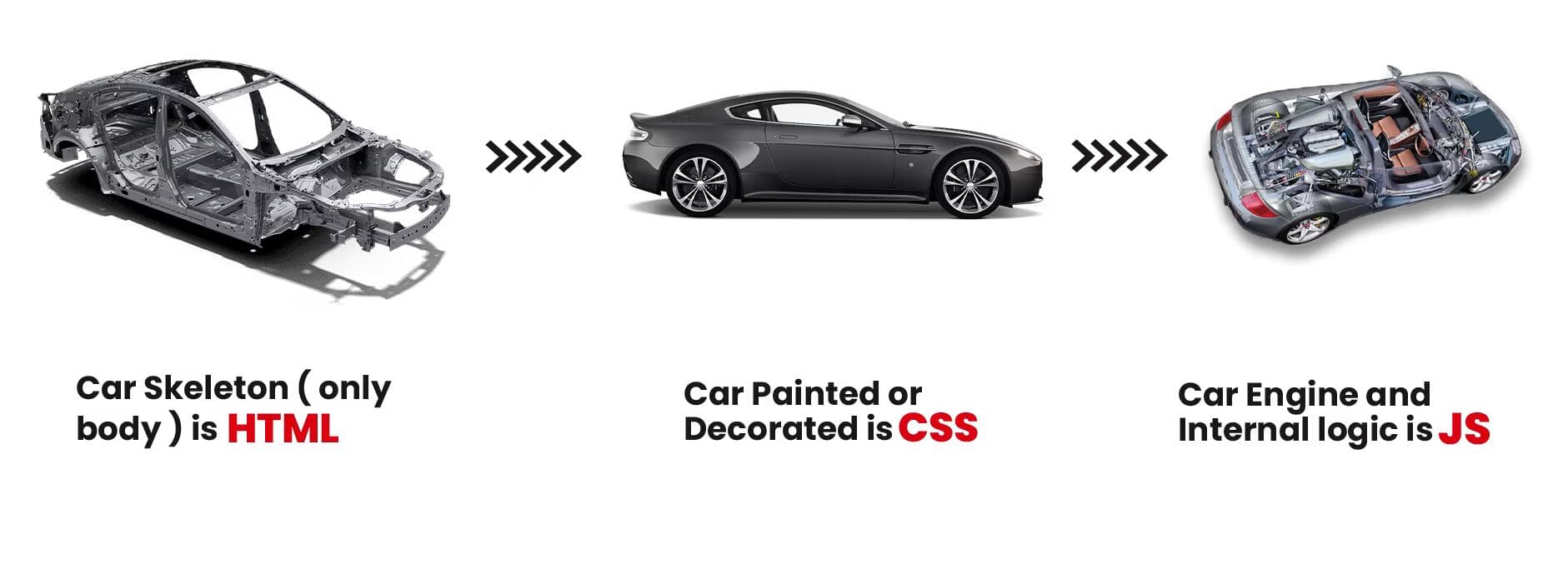What is JavaScript
Introduction to JavaScript, a versatile programming language for the web.
What is Programming?
Programming is a way to talk to computers. Similar to how we use Hindi, English, or Bengali to communicate with people, we use programming languages to communicate with computers by giving them clear, step-by-step instructions.
Here's what programming involves:
Designing
Planning what the program should do before you start writing code.
Writing
Translating the plan into code using a programming language like JavaScript.
Testing
Running your code to make sure it behaves as expected.
Debugging
Finding and fixing errors or unexpected behavior in the program.
Maintaining
Improving and updating the program over time to keep it working well.
By learning programming, you gain the power to create software that can run on computers, websites, mobile devices, and much more.
What is JavaScript?
JavaScript is a high-level, interpreted programming language originally designed to make web pages interactive. Today, it is one of the most popular and widely used languages in the world.
JavaScript can:
- Add interactivity to web pages (animations, forms, user input)
- Communicate with servers to fetch or send data (APIs)
- Build server-side applications using platforms like Node.js
- Create mobile and desktop apps through frameworks like React Native and Electron
It was invented by Brendan Eich in 1995, and has evolved through various standard specifications called ECMAScript (the official name of the language standard). Modern JavaScript supports advanced features like modules, classes, and asynchronous programming.
Fun Fact: Despite its name, JavaScript is not directly related to Java. The name was chosen for marketing reasons.
JavaScript is now a core skill for web developers, and has grown beyond browsers to power the modern software ecosystem.
JavaScript by Analogy
To understand JavaScript, think of a car:
HTML is the Body
Like the car's skeleton or chassis, HTML gives structure to a web page.
CSS is the Paint and Style
CSS decorates the page with colors and styles, just like painting and finishing the car.
JavaScript is the Engine and Logic
JavaScript powers interactivity and logic, just like the engine makes a car functional.

Image: A car's skeleton (HTML), its painted exterior (CSS), and its working engine and logic (JavaScript).
What is ECMAScript?
You might often hear people mention ECMAScript when talking about JavaScript. ECMAScript is simply the standard specification that defines how the JavaScript language should work.
Think of ECMAScript as the “blueprint” for JavaScript — it describes the rules, features, and behavior that every JavaScript engine (like Chrome's V8 or Firefox's SpiderMonkey) must follow.
Key points about ECMAScript:
- Created by ECMA International: a standards organization
- First version released in 1997
- New features are published regularly (for example, ES6 introduced
let,const, arrow functions, etc.) - Ensures that JavaScript works the same way across different browsers and environments
Good to know: Modern JavaScript features are usually described as part of ECMAScript versions, such as ES6 (2015), ES7 (2016), and so on.
In short, JavaScript is the language you write, and ECMAScript is the specification that keeps it consistent.
ECMAScript Versions
JavaScript evolves through versions of the ECMAScript standard. Each version introduces new features and improvements to make the language more powerful, cleaner, and easier to use.
Here's a quick overview of the most important versions:
- ES3 (1999): Widely adopted; introduced regular expressions and
try/catcherror handling. - ES5 (2009): Added strict mode, JSON support, and better array methods (
map,forEach). - ES6 (2015): A major update — introduced
let,const, arrow functions, classes, template literals, modules, promises, and much more. - Later versions (ES7-ES15): Added async/await, optional chaining, top-level await, and many other modern features.
Latest ECMAScript Version
The latest ECMAScript version is ES15 (2024), which includes features like WeakRefs, logical
assignment operators, and more — supported by all modern browsers.
How JavaScript Works
JavaScript is designed to run inside web browsers, where it makes web pages interactive and dynamic. Every browser has a built-in JavaScript engine that reads and executes JavaScript code. For example, Chrome uses the V8 engine, while Firefox uses SpiderMonkey.
Here's what happens behind the scenes:
Parsing
The browser reads your JavaScript code and checks it for syntax errors before running it.
Compilation
Modern JavaScript engines use Just-In-Time (JIT) compilation to turn your code into fast machine code.
Execution
The engine then executes the code and connects it to the HTML and CSS on your web page.
JavaScript uses an event-driven, single-threaded model. It processes one instruction at a time but uses an event loop to handle things like clicks or data fetching without blocking the entire program.
Beyond the Browser
JavaScript is no longer limited to browsers — thanks to platforms like Node.js, you can also run JavaScript on servers, desktop apps, and even IoT devices!
Where JavaScript is Used
JavaScript has grown far beyond simple web page scripts. Today, it is used in a wide variety of applications and platforms:
Web Development
JavaScript powers the interactive parts of websites, from form validation to animations and complex single-page apps.
Server-Side Development
With Node.js and Deno, JavaScript can run on the server to build APIs, handle databases, and serve dynamic content.
Mobile Apps
Frameworks like React Native and Ionic allow you to build cross-platform mobile applications using JavaScript.
Desktop Applications
Tools like Electron make it possible to build desktop apps with web technologies, all powered by JavaScript.
IoT and Hardware
JavaScript can even run on IoT devices and microcontrollers using platforms like Johnny-Five or Espruino.
Good to know: JavaScript is one of the most versatile programming languages today, running on almost every platform you can think of.
How is this guide?
Sign in to share your feedback
Help us improve by sharing your thoughts on this guide.
Last updated on